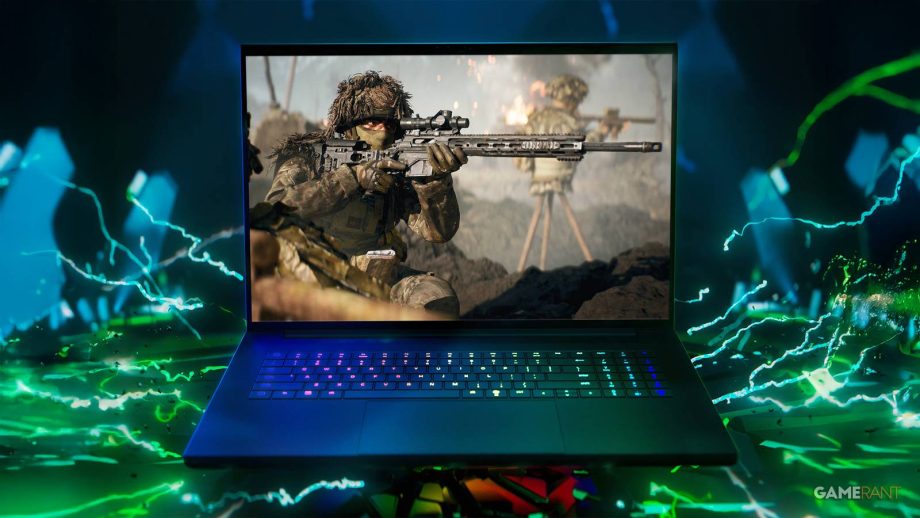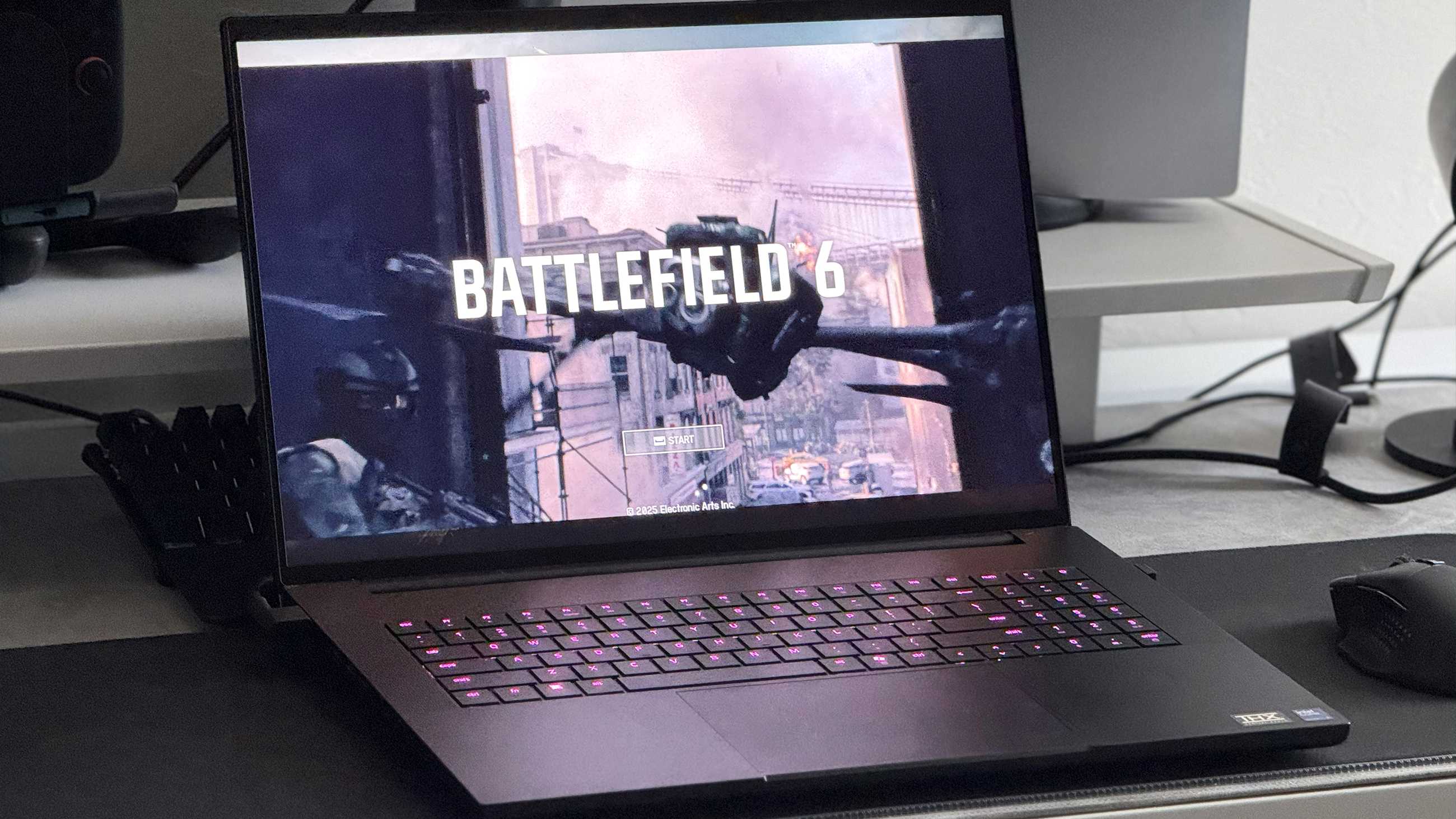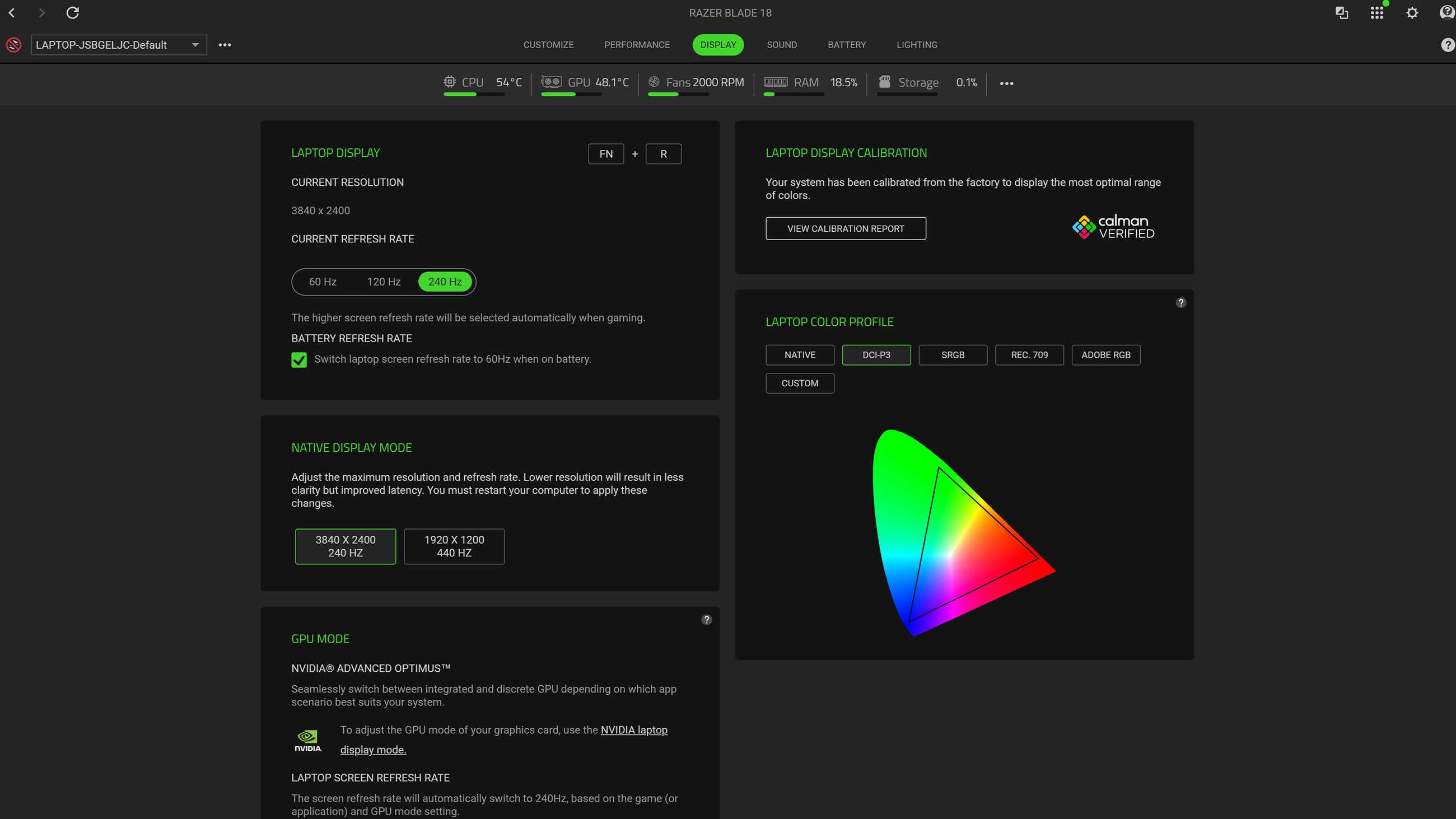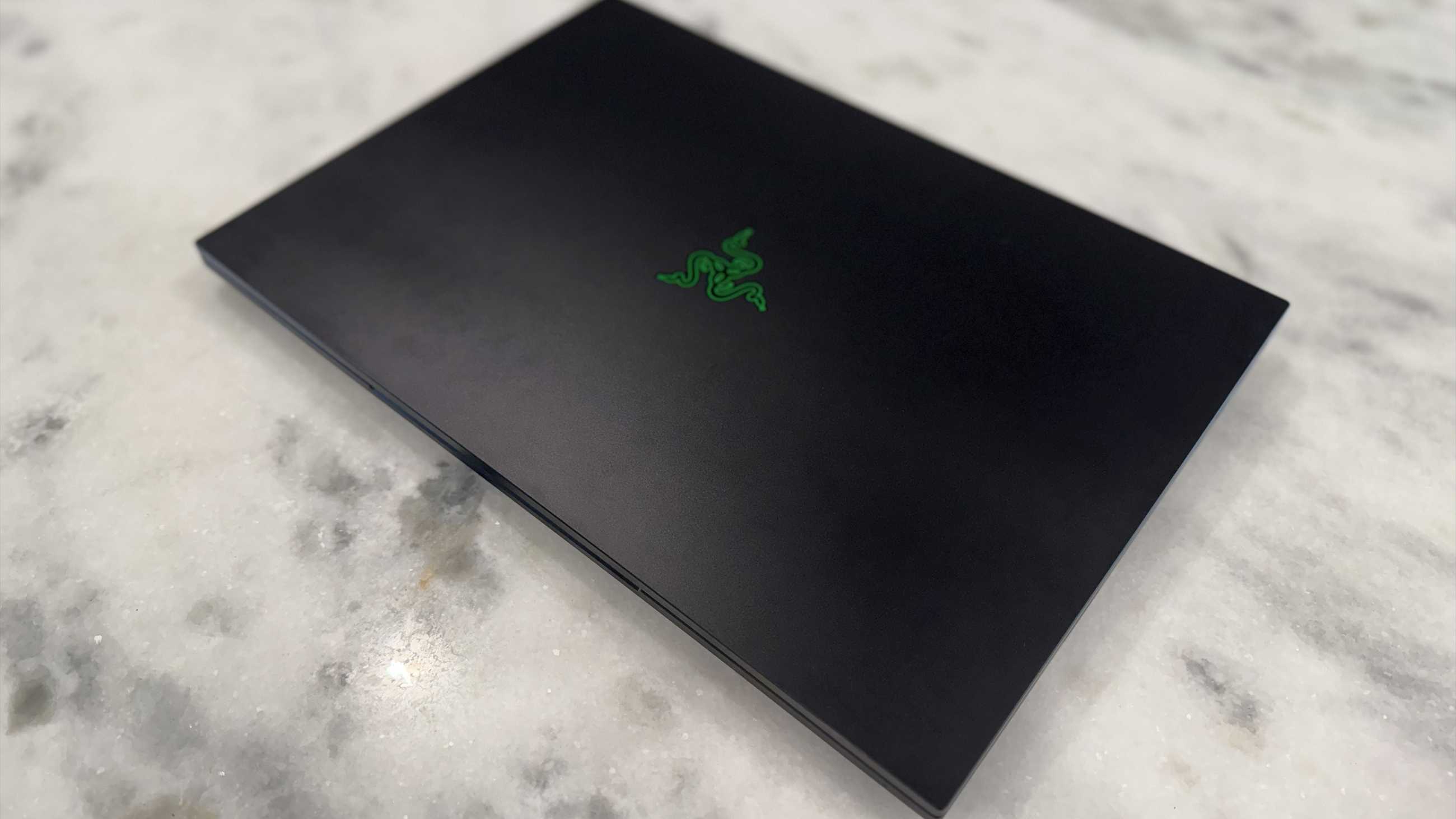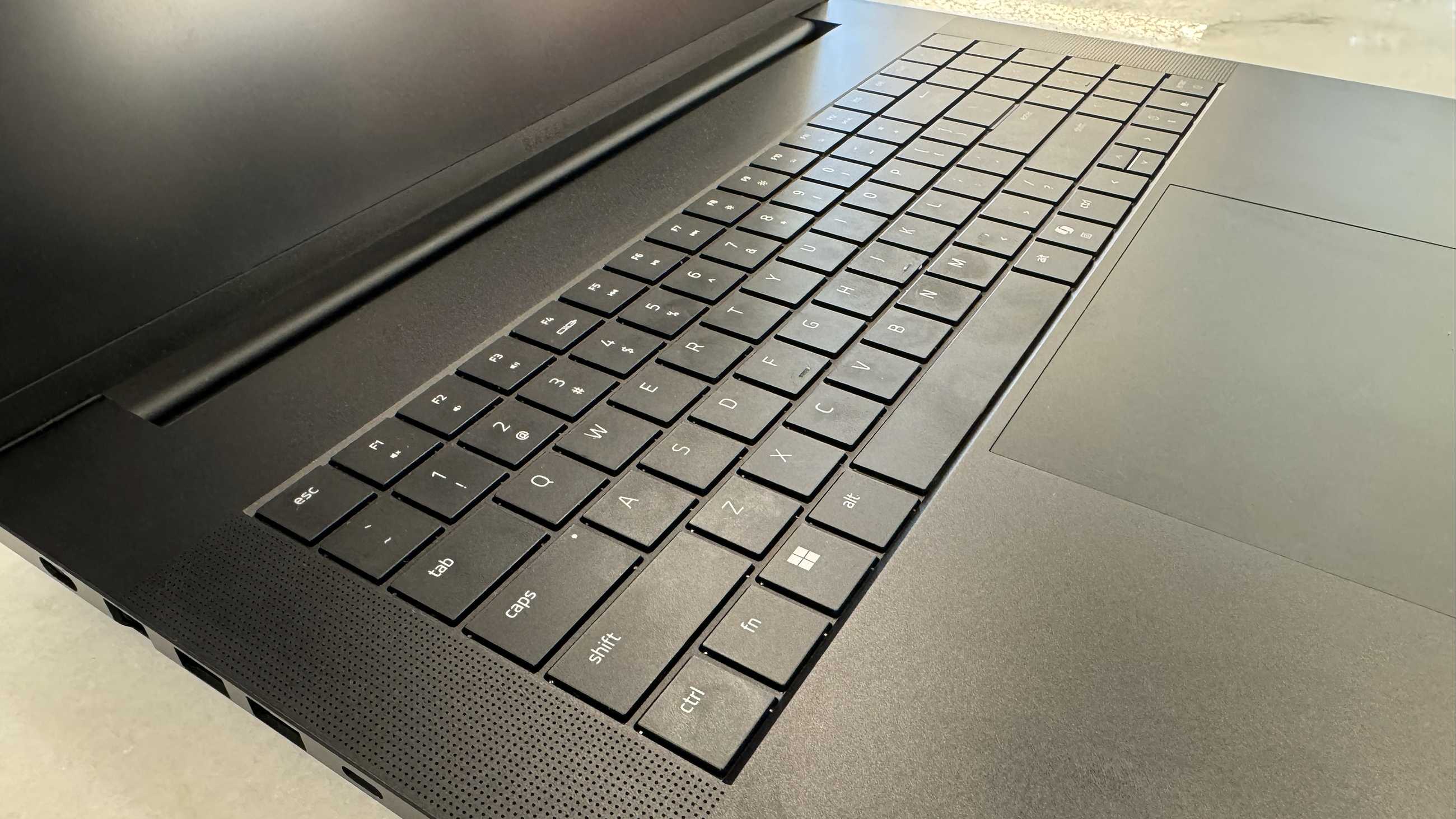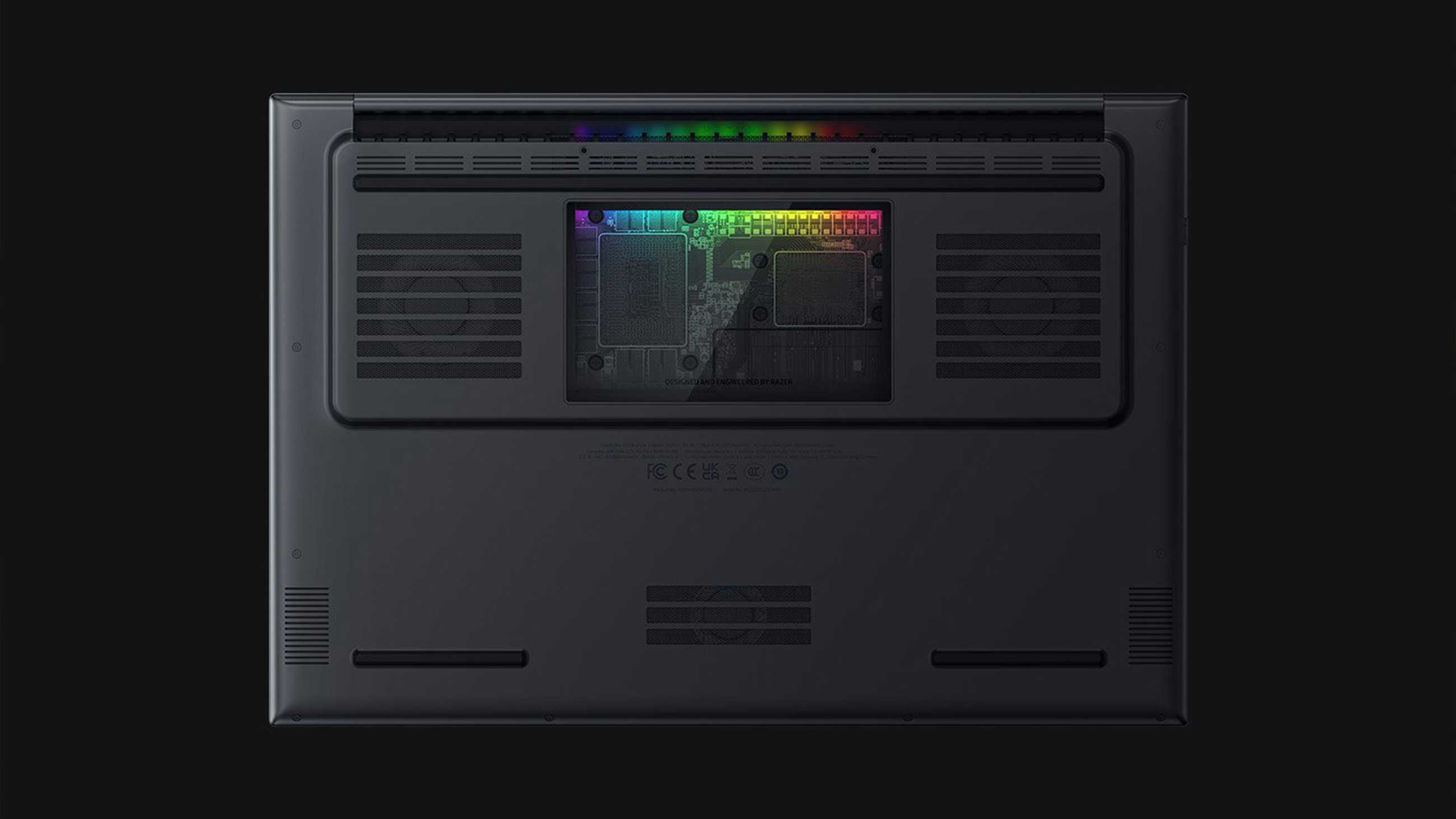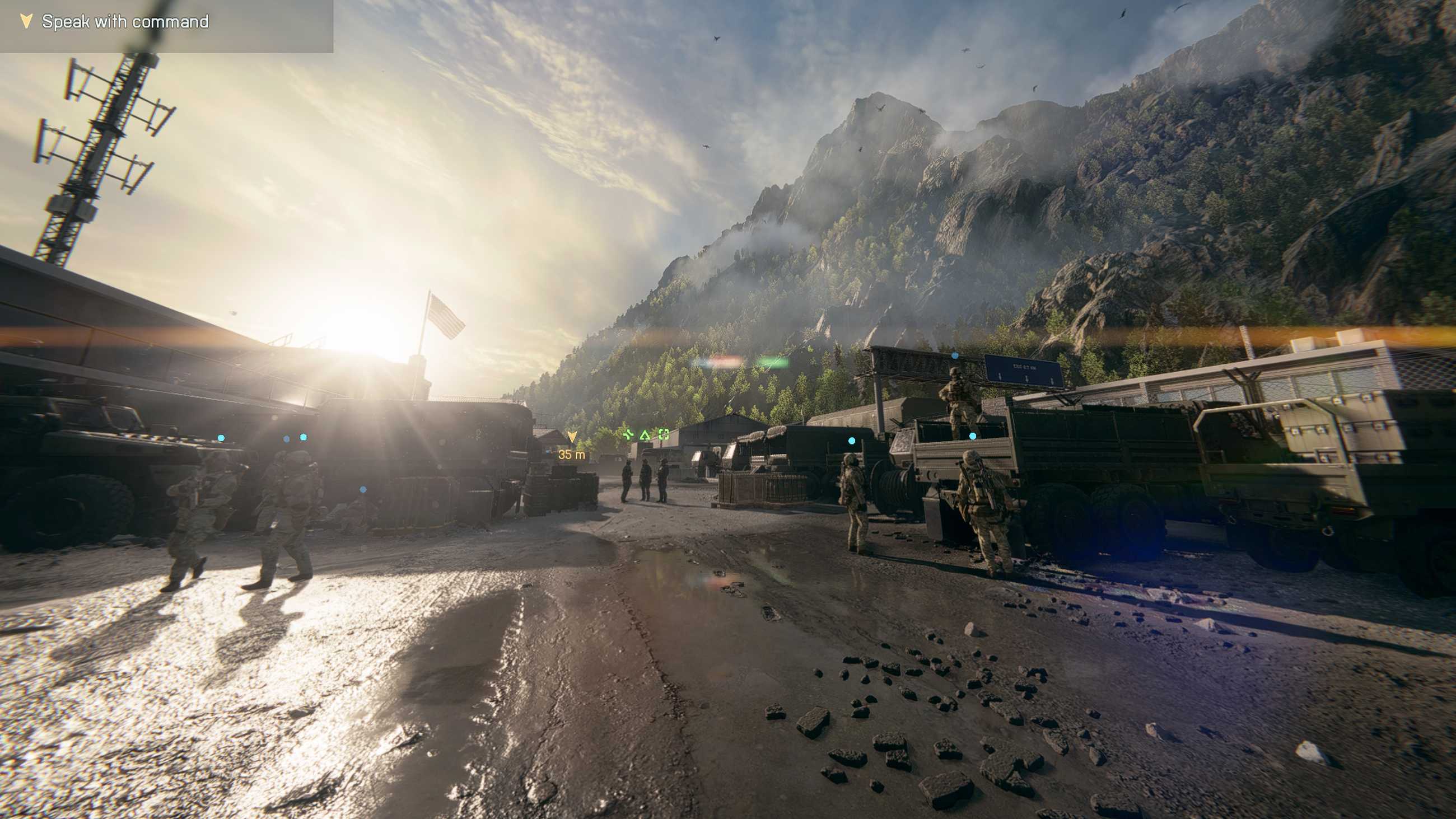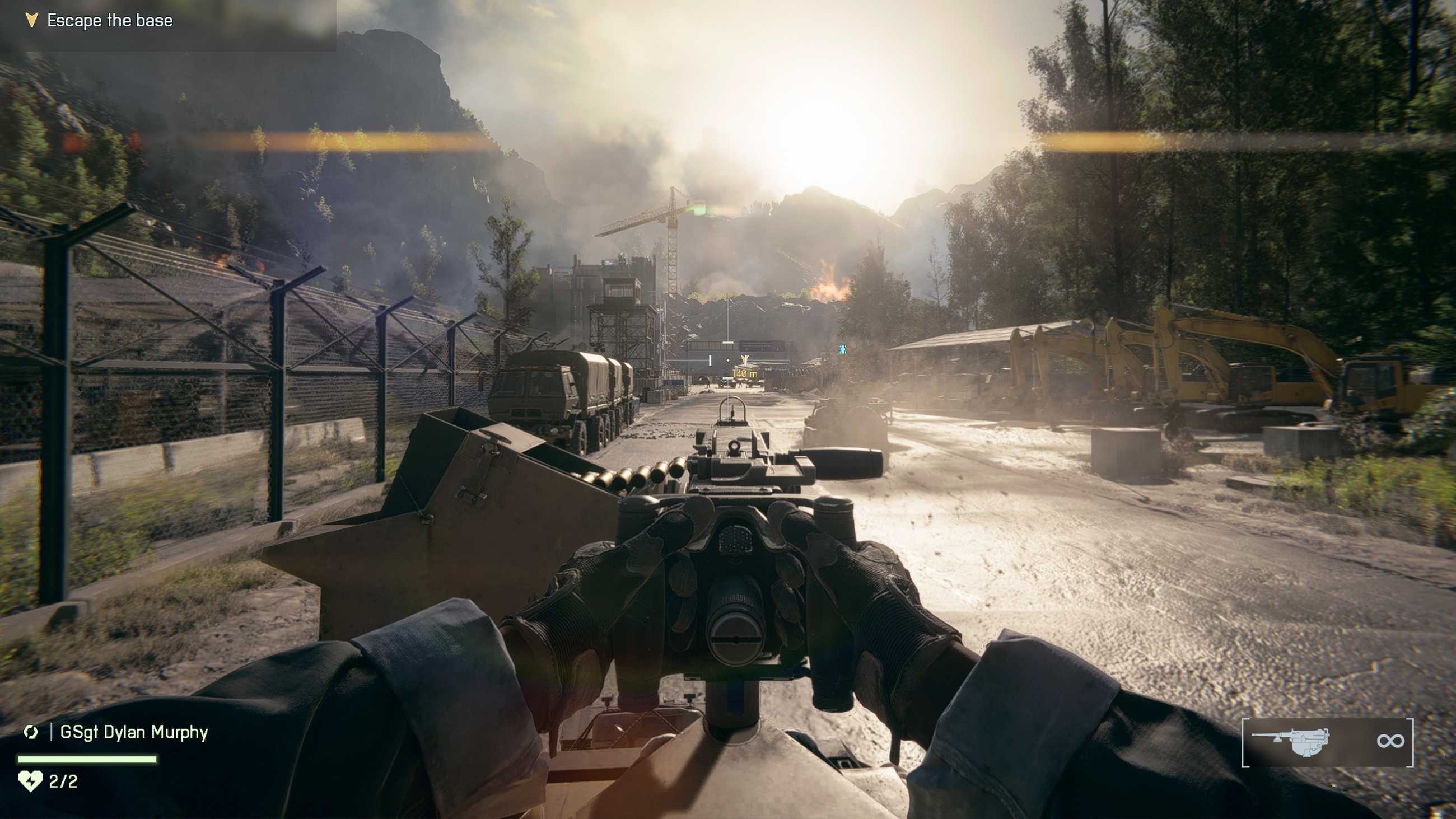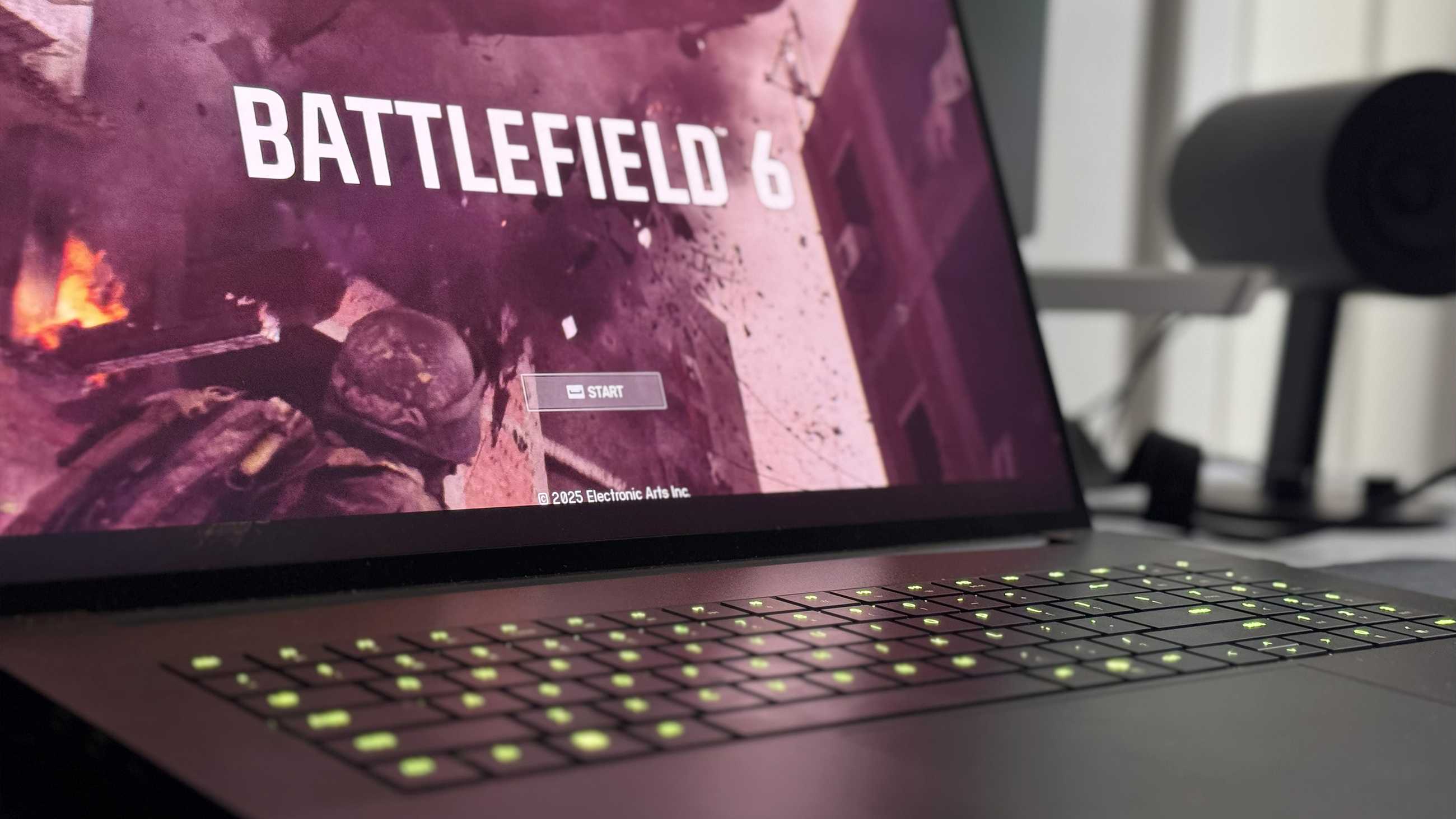The Razer Blade 18 has been an interesting experiment since it first appeared as the company’s largest and most ambitious laptop. It was ultimately created for people who wanted desktop power without giving up the portability of a laptop, but, just as it is with every generation, it came with trade-offs. Earlier models of the Blade 18 were known for having strong performance but struggled with heat, loud fans, and battery life that barely justified the term portable. Earlier this year, Razer launched an upgraded version of the Blade 18, complete with a stronger internal build, new display flexibility, and a more aggressive cooling system designed to support modern hardware without melting through the chassis.
With an Intel Ultra 9 275 HX Series 2 processor and an RTX 50 Series GPU inside, it’s clear that Razer wants the Blade 18 to be taken seriously by competitive players and content creators who regularly push their hardware to its limits. Game Rant was recently provided with an RTX 5090 version of the Razer Blade 18, specifically for the purpose of testing it out on one of the most demanding shooters currently available: Battlefield 6. However, before getting to the results, it is worth breaking down what has changed in 2025 for the Blade 18 and what kind of experience this machine is designed for.
2025 Razer Blade 18 Key Specs and Features
- CPU: Intel Ultra 9 275 HX (Series 2)
- GPU: NVIDIA GeForce RTX 5090
- RAM: 64 GB DDR5
- Disk Drive: Lexar SSD NM790 2TB
- Screen: 18″
- Dual Display Mode: UHD+ 240Hz (3840 x 2400) and FHD+ 440Hz (1920 x 1200)
- Audio: THX Six-Speaker With 2 Tweeters, 4 Subs, and 3 Smart Amps
- Keyboard: Scissor-Switch With 1.5mm travel, 63G Actuation Force, and up to 6 Million Clicks
Intuitive Customization With Razer Synapse
Razer Synapse is something Razer users have been able to take advantage of for quite some time, and it essentially functions as a one-stop shop for computer customization. The Razer Blade 18 greatly benefits from Synapse, though, especially when taking advantage of its Dual Display Mode feature. With Synapse, I could switch from UHD to FHD with the click of a button, making that part easy. I was a little let down by the fact that switching to a different display mode required me to restart the computer every time, but it didn’t take more than 60 seconds for the computer to fully boot up again and be ready for use.
Within Razer Synapse, every aspect of the Blade 18 can be customized — including the keyboard, performance (Balanced, Silent, Performance, Turbo, and Custom), display, sound, battery, and lighting. The gaming laptop’s deeper customization within Synapse allows users to adjust fan curves, change the color profile, set audio EQ profiles for various activities, and even save presets for each linked game. Of course, Synapse can be taken advantage of on any Razer computer, but the Blade 18’s capabilities offer unique options that other rigs cannot.
Available Configurations
|
PRICE |
$3,499 |
$4,099 |
$4,899 |
$5,199 |
|---|---|---|---|---|
|
DISPLAY |
Dual Mode IPS UHD+ 240Hz | FHD+ 440Hz |
– |
– |
– |
|
CPU |
Intel Core Ultra 9 275HX (Series 2) |
– |
– |
– |
|
GPU |
RTX 5070 Ti |
RTX 5080 |
RTX 5090 |
– |
|
RAM |
32GB DDR5 (5600MHz) |
– |
– |
64GB DDR5 (5600MHz) |
|
SSD |
1TB PCIE Gen4 |
– |
2TB PCIE Gen4 |
4TB PCIE Gen4 |
|
COLOR |
Black |
– |
– |
– |
|
PORTS |
1x TBT5, 1x TBT4, 3x USB A, HDMI, Ethernet, SD Card, Audio/HP Jack |
– |
– |
– |
|
KEYBOARD |
1.5mm Per Key RGB |
– |
– |
– |
|
Z-HEIGHT |
21.99—27.9mm |
– |
– |
– |
|
BATTERY |
99Whr |
– |
– |
– |
2025 Razer Blade 18 Design, Portability, and Everyday Use
The Blade 18 may be a proper gaming laptop, but Razer has specifically designed it to bridge high-end gaming performance and daily productivity use, albeit with some trade-offs. The build quality alone is just about as good as it gets when it comes to a gaming laptop, with high-end materials that ensure it doesn’t feel weak or flimsy. To top that off, the chassis has a satisfying matte finish on it, giving it a sleek, professional look that is perfect for both gaming and productivity environments.
The Razer Blade 18 is definitely not a laptop anyone would want to lug around everywhere, with a 7 lb body, 2 lb power adapter, and an 18″ size. Even though the appeal of a gaming laptop is how it blends portability with performance, the Blade 18 might be considered more of a desktop replacement than a mobile addition — for more than one reason.
Given its specs, the Blade 18 naturally uses a lot of power and performs far better when it’s plugged in, which automatically works against its portability. When running on battery alone, it generally only lasts around 2 hours before dying, but I was able to push those limits a bit higher by putting it in Silent mode via Razer Synapse and then adjusting the On-Battery Power Mode to Best Power Efficiency. Of course, that drastically reduced the laptop’s performance, making it useful for little more than performing the lightest tasks possible. It’s safe to say that trying to game with it unplugged is a no-go.
With the Razer Blade 18’s hybrid design, I did spend quite a bit of time typing with it to test out the keyboard. I will say that it is one of the better laptop keyboards I’ve typed on, but the key travel is still a bit too low for efficient typing. I didn’t necessarily find myself making many accidental key presses; the lack of feedback just resulted in some misses at times.
Even with some caveats, the Blade 18 still exceeds performance expectations for everyday use. In fact, it’s arguably one of the best portable gaming options content creators have, as its gaming performance is top tier, and it doesn’t cave when multiple demanding apps are open at once — like Adobe Photoshop, Premiere Pro, and others.
Testing the 2025 Razer Blade 18 With Battlefield 6
During my test run of the Razer Blade 18 with Battlefield 6, I had settings maxed out on the laptop’s UHD mode (3840 x 2400), and it never broke a sweat — even during some lengthier sessions. After my typing experience with the Razer Blade 18, I was a bit concerned going in that its keyboard wouldn’t be as responsive as I prefer when playing games like Battlefield 6, tempting me to use an external peripheral instead. However, I was pleasantly surprised. Not only were the laptop’s visuals and performance impeccable and, bar none, some of the best a portable gaming rig has to offer, but the keyboard proved to be exceptionally reliable under pressure.
- Graphics Preset: Overkill
- DLSS: Quality
- Multi Frame Generation: 4x
With these settings on, Battlefield 6‘s campaign maintained an average of 390–400 fps, occasionally dipping to 360–370 fps when there was a lot of action on the screen or dense foliage. Battlefield 6‘s multiplayer told close to a similar story, though it would sometimes sneak up to 420 fps and only dip to around 380. Keep in mind that this was with Multi Frame Generation maxed out, but performance was still solid, even with it turned off. I can’t recall one moment when the laptop failed to keep up with the game’s demands, ensuring every one of my play sessions went smoothly.
I did try out the Blade 18’s FHD Display Mode for the higher refresh rate at the cost of a lower resolution, but the difference between it and the 240Hz offered by the laptop’s UHD Display Mode was negligible.
The Razer Blade 18 does get a little warm on the chassis rest near the touchpad, and the fans are quite loud when it’s in Turbo mode (maxing out at 4,000 RPM). However, even with loud fans, if players aren’t playing with a gaming headset, hearing the action shouldn’t be a problem. Even with the volume at 30/100 during my Battlefield 6 test run, I could hear everything loud and clear. Speaking of the way this laptop sounds — it’s incredibly immersive, with plenty of bass to balance out the highs that many gaming laptop sound systems are known to prefer.
The picture on the Razer Blade 18 is crystal clear, showing off Battlefield 6‘s exemplary attention to detail. That detail is especially noticeable in the game’s use of lighting to produce realistic environments, but the visuals can’t even reach their full potential without a laptop like the Blade 18 generating them. It was refreshing to witness Battlefield 6‘s graphics the way they were meant to be without crashing its performance too, and on a laptop at that.
The 2025 Razer Blade 18 Is Built for Power Above All Else
At a fairly high price point and with the power that it demands, the 2025 Razer Blade 18 isn’t a laptop for everyone — but it nonetheless delivers on its promises. It’s unapologetically large, prioritizes power over portability, and performs well enough that it is one of the strongest desktop replacements available. Its battery life is a clear limitation and the keyboard could use deeper travel for typing, and yet the combination of its exceptional gaming performance, accurate visuals, deep customization through Synapse, and impressive thermal control under load makes it a great choice for players and creators who want some serious, uncompromising hardware. Those looking for a gaming laptop that can handle Battlefield 6 and other demanding PC games without breaking a sweat, as long as they plan on keeping it plugged in most of the time, the 2025 Blade 18 is one of the best options for that.
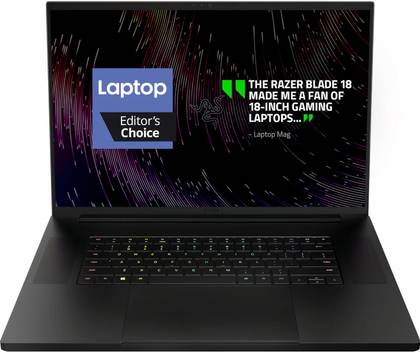
- Operating System
-
Windows 11
- CPU
-
13th Gen Intel 24-Core i9 HX CPU
- GPU
-
NVIDIA GeForce RTX 4070
- RAM
-
32GB
- Storage
-
1TB SSD
- Display (Size, Resolution)
-
18″ QHD+ 240Hz
The 2025 Blade 18 is available for purchase now on Razer’s official website. Game Rant was sent a unit and provided with a Battlefield 6 key for the purposes of this review.

